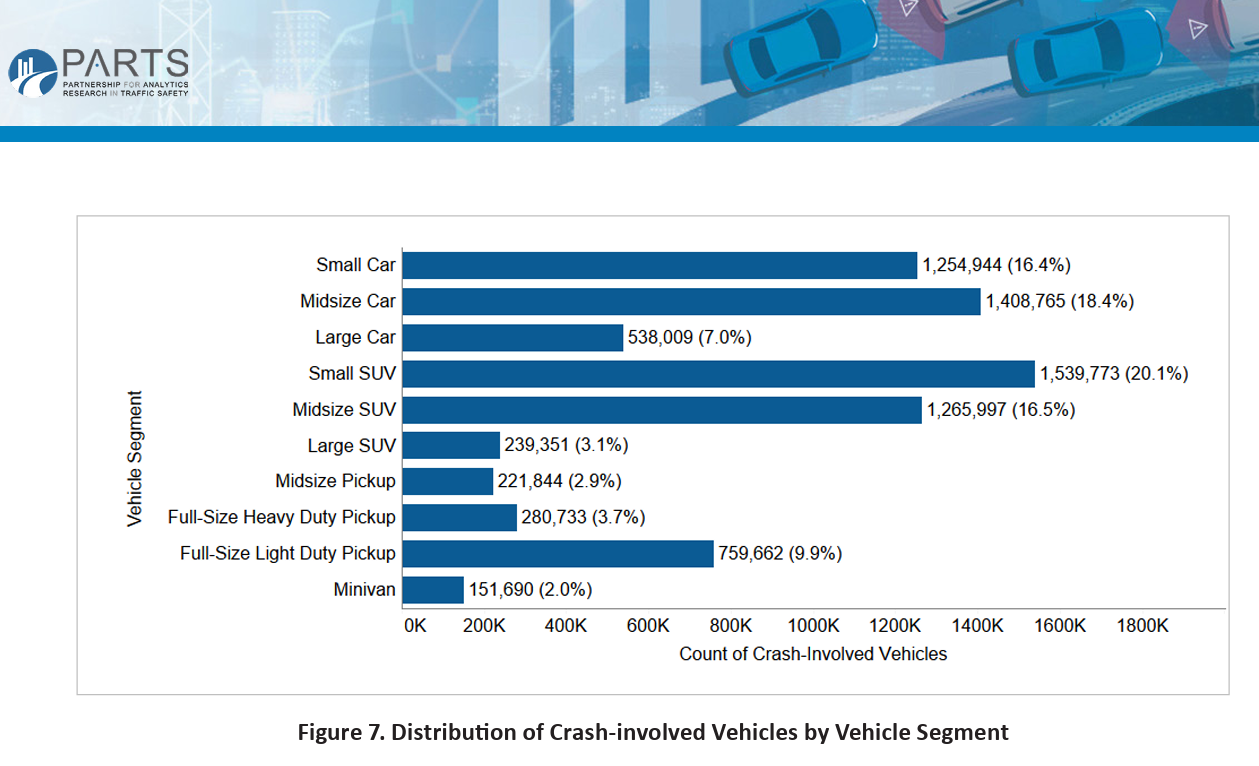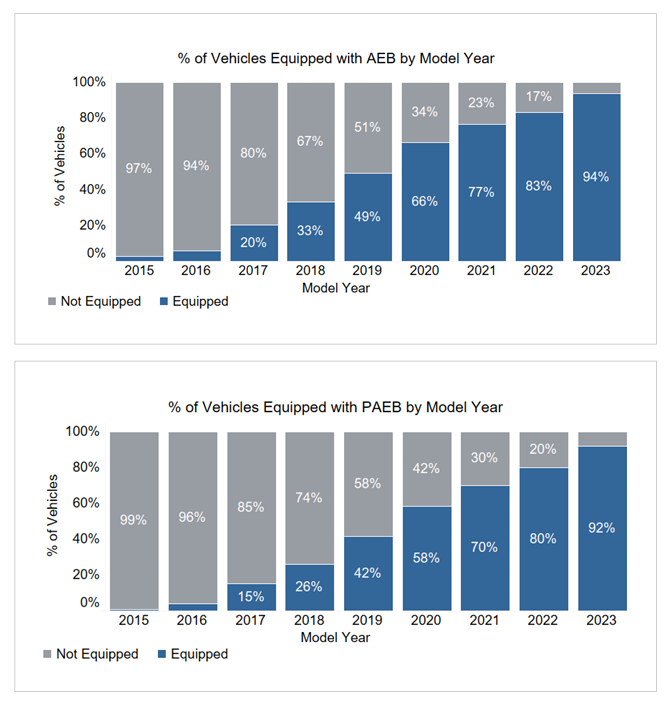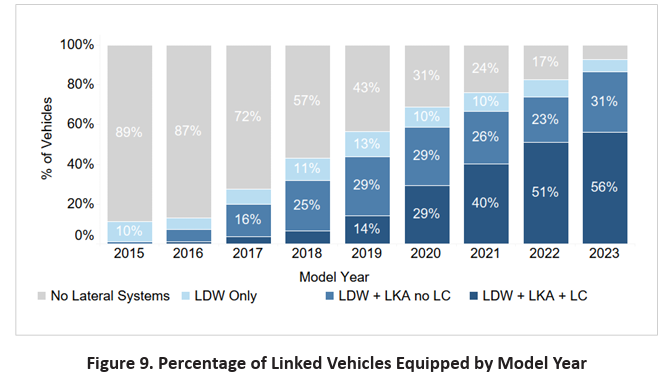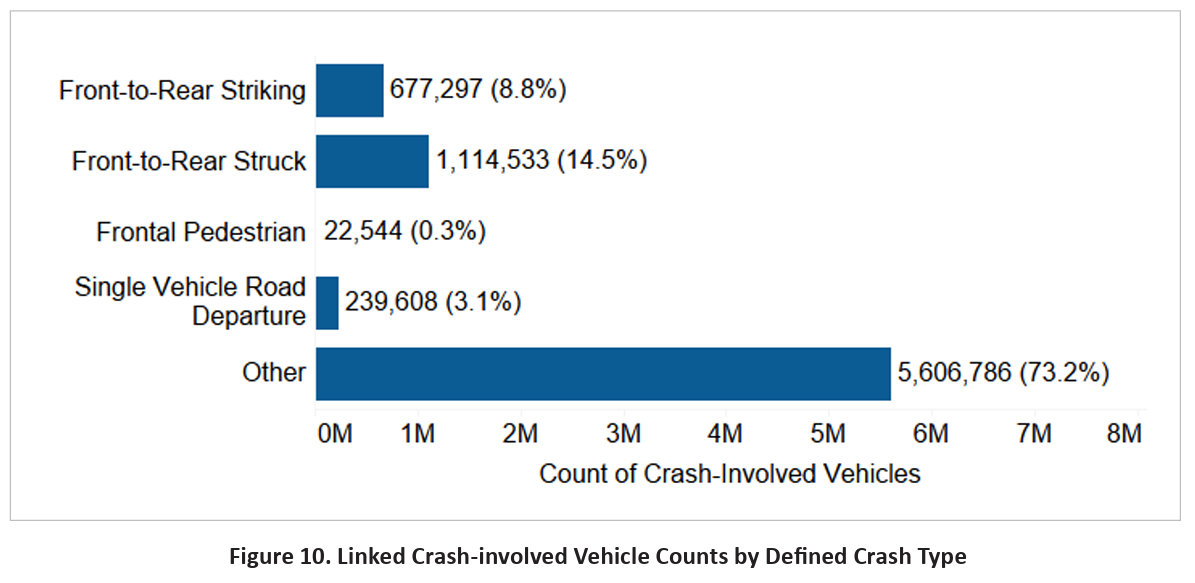New study finds AEB has improved, cuts rear-end crashes by half | Repairer Driven News
Automatic emergency braking (AEB) continues to improve as it cuts rear-end crashes in half, according to a recent study by the Partnership for Analytics Research in Traffic Safety (PARTS).
PARTS is a partnership between automakers and the National Highway Traffic Safety Administration (NHTSA). Participants voluntarily share safety-related data for collaborative safety analysis. The not-for-profit organization MITRE operates PARTS.
The AEB effectiveness study paired auto manufacturer equipment with police crash report data from 16 states over nearly eight years to cover 98 million vehicles and 21.2 million crashes. MITRE says it’s the largest and most comprehensive study of advanced driver assistance systems (ADAS) to date.
The PARTS study is a follow-up to a previous ADAS effectiveness study released in 2022. The most recent more than doubled the number of vehicle models included, and added three additional vehicle segments, three additional states, and three new model years, a news release from MITRE states. For the first time, the study included data from new PARTS members Ford and Hyundai. Other manufacturers that contributed data to this study were General Motors, Honda, Mazda, Mitsubishi, Stellantis, Subaru, and Toyota.
The data showed an increase in AEB effectiveness, from 46% across model years 2015–2017 to 52% across model years 2021–2023, indicating that advancements in the technology have led to tangible improvements, MITRE said.
The study notes that for every 1,000-pound decrease in vehicle weight, a 4% reduction in front-to-rear crashes for AEB-equipped vehicles was measured.
“Understanding this effect is crucial as vehicle weight increases on U.S. roads,” PARTS wrote in the study.
According to the study, single-vehicle frontal crashes with non-motorists including pedestrians, cyclists and those operating scooters and wheelchairs were reduced by 9% involving vehicles equipped with pedestrian automatic emergency braking (PAEB) systems.
This is the first time a statistically significant measure of PAEB effectiveness has been quantified by PARTS. According to NHTSA, pedestrian crashes are among the most severe forms of traffic crashes, with deaths accounting for 18% of all traffic fatalities.
PARTS found that vehicles with lane departure warning (LDW) and lane keeping assistance (LKA), or LDW, LKA, and lane centering assistance reduced single-vehicle road-departure crashes; however, rates were low and varied with speed limit.
“The size, growth, and iterative nature of this study are incredible,” said Jennifer Morrison, PARTS communications chair and head of vehicle safety for Mazda North American Operations, in the release. “The industry has voluntarily developed and deployed these crash avoidance systems. We can now see a trend in their life-saving capabilities and can focus our efforts on continuing that trend.”
The data will also be used to continue studying ADAS’s effectiveness in reducing crash severity, including from the newest PARTS member, Kia.
PARTS said future studies will attempt to assess whether an ADAS feature was on or activated at the time of crashes.
During SAE International’s annual Government/Industry Meeting on Jan. 30, Alliance for Automotive Innovation CEO John Bozzella said the auto industry should improve its communication to consumers about the benefits and limitations of Level 2 ADAS, according to Automotive News.
“We should call this technology what it is and not brand it what it isn’t,” Bozzella said, according to the article. “In other words, recognize that it is not full self-drive.”
Part of the solution is common terminology to describe the technologies to curb confusion in the marketplace, he added.
“We need to figure out a way to align [the industry’s] mid-term and long-term objectives and research and development with the mid-term and long-term research agenda that the government has so that we can be more thoughtful and strategic,” he said, according to the article. “We don’t have that now.”
The Society of Collision Repair Specialists (SCRS) has a playlist of videos that work to explain different ADAS systems, including helping consumers better understand them and their functions and how they may contribute to the repair process.
For more information about common ADAS names, check out this publication from AAA, Consumer Reports, J.D. Power, the National Safety Council, Partners for Automated Vehicle Education, and SAE.
Images
Featured image credit: Aliaksei Brouka/iStock
Graphs pulled from PARTS 2025 “Study on Real-world Effectiveness of Model Year 2015–2023 Advanced Driver Assistance Systems”
Share This:












